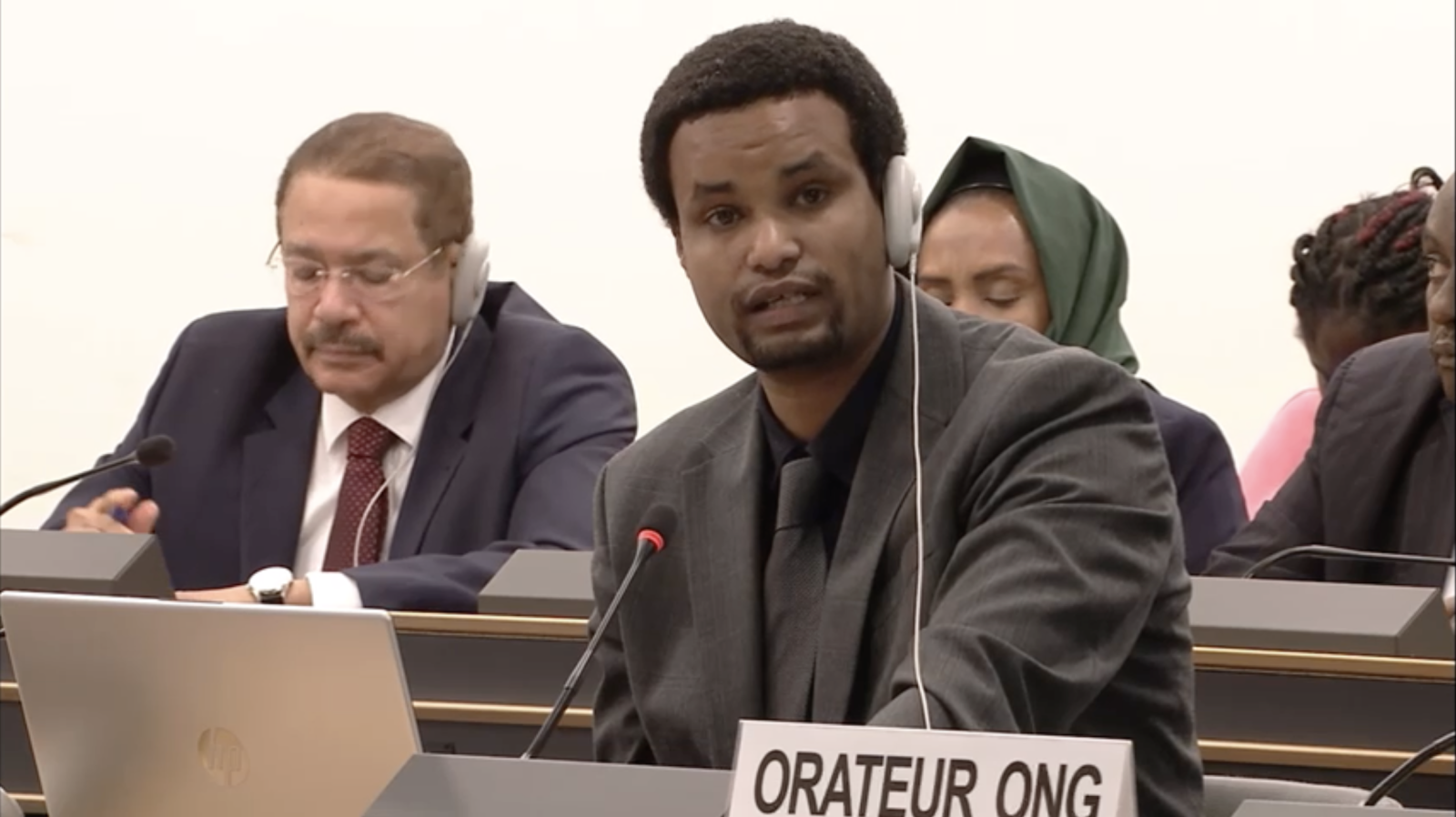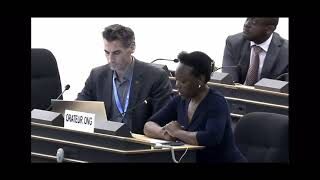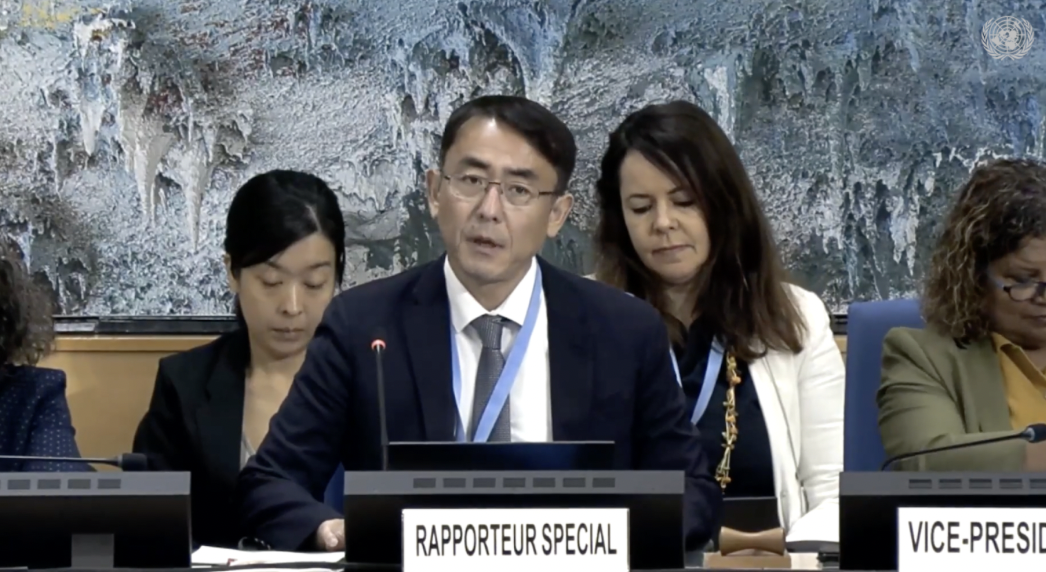
Voices Against Exploitation: An Interactive Dialogue on Contemporary Slavery
The 60th Session of the Human Rights Council
08 September - 08 October 2025
Item 3: Interactive dialogue with the Special Rapporteur on contemporary forms of slavery
12 September 2025
By Sonia Darrieumerlou and Haliema Sharfeddine / GICJ
Executive Summary
Contemporary forms of slavery continue to pose a severe global human rights challenge, affecting millions despite longstanding international legal frameworks. Forced labour, debt bondage, forced marriage, child labour, human trafficking, and servitude persist, driven by structural inequalities, poverty, conflict, and weak governance. The COVID-19 pandemic, climate crises, and economic instability have further exacerbated these vulnerabilities, particularly for women, children, migrants, and marginalised groups.
At the Human Rights Council’s 60th session, the interactive dialogue with the Special Rapporteur on contemporary forms of slavery, Professor Tomoya Obokata, focused on the worst forms of child labour in the context of achieving Sustainable Development Goal 8.7. The Special Rapporteur acknowledged limited progress but warned that the most severe forms of child exploitation, including forced labour, bonded labour, sexual exploitation, and hazardous work, remain widespread. Persistent poverty, inadequate education, weak law enforcement, and insufficient social protection continue to impede progress, while emerging threats such as digital exploitation and climate-induced displacement worsen the situation.
The report called for stronger legal frameworks, better enforcement, expanded access to education and social protection, and greater corporate accountability. During the dialogue, Ecuador and Guatemala reaffirmed their national commitments, highlighting progress in integrating child labour prevention into social and educational systems and strengthening institutional coordination.
The session concluded with a call for renewed global commitment and coordinated, rights-based action to accelerate the eradication of child labour and uphold the dignity and rights of vulnerable children worldwide.
Background
Contemporary forms of slavery remain a serious and widespread violation of human rights affecting millions of people worldwide. Despite international legal frameworks, including the Slavery Convention of 1926, the Supplementary Convention of 1956, and various International Labour Organization (ILO) conventions, modern slavery persists in numerous forms. These include forced labour, debt bondage, forced marriage, child labour, human trafficking, and servitude. While many states have enacted legislation and policies aimed at eradicating these practices, implementation remains inconsistent and often inadequate.
Globally, structural inequalities, systemic discrimination, and socio-economic vulnerabilities continue to create environments in which exploitative practices flourish. Armed conflict, displacement, migration, poverty, lack of access to education, and weak governance are key contributing factors. Women, children, indigenous peoples, migrants, and those in informal or unregulated sectors are particularly at risk. The global supply chain, often opaque and underregulated, also plays a significant role in enabling exploitative labour practices, especially in sectors such as agriculture, mining, textiles, and domestic work.
The COVID-19 pandemic, along with climate-related crises and economic instability, has further increased the vulnerability of at-risk populations. School closures and growing poverty have pushed more children into labour, some into its worst forms. Meanwhile, state capacity to monitor and enforce labour standards has been weakened in many regions.
In this context, the Human Rights Council’s 60th session dedicated its 8th meeting to an interactive dialogue under Item 3, focusing on contemporary forms of slavery, particularly the worst forms of child labour. The discussion was guided by the latest thematic report of the Special Rapporteur on contemporary forms of slavery, which assessed progress made, identified ongoing challenges, and offered concrete recommendations to accelerate action in line with international human rights obligations and the Sustainable Development Goals (SDGs), particularly Target 8.7.
Summary of the Special Rapporteur's
The Special Rapporteur on contemporary forms of slavery, Professor Tomoya Obokata, presented his thematic report to the Human Rights Council under agenda item 3, focusing specifically on the worst forms of child labour. The report is framed within the broader international commitment to eradicate child labour in all its forms by 2025, as set out in SDG 8.7, and aims to assess progress while highlighting remaining gaps and proposing practical solutions.
The report acknowledged some limited progress in reducing overall child labour, but warns that the worst forms, namely those linked to slavery and slavery-like practices, remain alarmingly widespread. These include forced and bonded labour, use of children in armed conflict, commercial sexual exploitation, and hazardous work that threatens children's health, safety, or morals. The Special Rapporteur emphasised that these practices are not only violations of international law but also a manifestation of systemic failure to protect children’s rights.
Key barriers to progress include entrenched poverty, inequality, discriminatory social norms, inadequate access to education, and insufficient social protection systems. Additionally, weak enforcement of child labour laws and inadequate labour inspections allow exploitative practices to persist. The report highlighted the fact that legal ratification of international instruments, while important, is not sufficient without effective implementation and monitoring at the national level.
The Special Rapporteur expressed concern about emerging threats, including digital technologies facilitating online exploitation of children, the impact of climate-induced displacement, and increased economic pressure on families leading to the commodification of children's labour. He also noted that corporate responsibility remains underdeveloped in many sectors, where child labour persists in supply chains with limited transparency or accountability.
Particular attention was given to the gendered nature of child labour. Girls are often subject to exploitation in domestic work and commercial sexual activities, frequently in hidden and unregulated environments. Boys are disproportionately involved in physically hazardous work, such as mining or agriculture. The report called for targeted interventions that recognise and address these gender-specific vulnerabilities.
The report concluded with a series of recommendations. It urged states to strengthen legal frameworks and enforcement mechanisms, invest in quality education and universal social protection systems, and ensure meaningful participation of children and affected communities in designing and evaluating anti-slavery strategies. International cooperation, adequate resourcing of national human rights institutions, and stronger corporate due diligence frameworks were also highlighted as essential for meaningful progress.
The Special Rapporteur ultimately called for renewed political will, integrated and rights-based approaches, and a move from commitment to action. Without urgent and coordinated efforts, the international community risks failing to meet the 2025 target to eliminate the worst forms of child labour and to protect the rights and dignity of the most vulnerable children.
Summary of the Interactive Dialogue
Opening remarks

The Special Rapporteur on contemporary forms of slavery, Professor Tomoya Obokata, presented his latest report (A/HRC/60/28), warning of legal gaps, weak enforcement, and the urgent need for cross-border action.
The Special Rapporteur expressed concern about emerging threats, including digital technologies facilitating online exploitation of children, the impact of climate-induced displacement, and increased economic pressure on families leading to the commodification of children's labour. He also noted that corporate responsibility remains underdeveloped in many sectors, where child labour persists in supply chains with limited transparency or accountability.
Particular attention was given to the gendered nature of child labour. Girls are often subject to exploitation in domestic work and commercial sexual activities, frequently in hidden and unregulated environments. Boys are disproportionately involved in physically hazardous work, such as mining or agriculture. The report called for targeted interventions that recognise and address these gender-specific vulnerabilities.
The Special Rapporteur ultimately called for renewed political will, integrated and rights-based approaches, and a move from commitment to action. Without urgent and coordinated efforts, the international community risks failing to meet the 2025 target to eliminate the worst forms of child labour and to protect the rights and dignity of the most vulnerable children.
Statements of the Countries
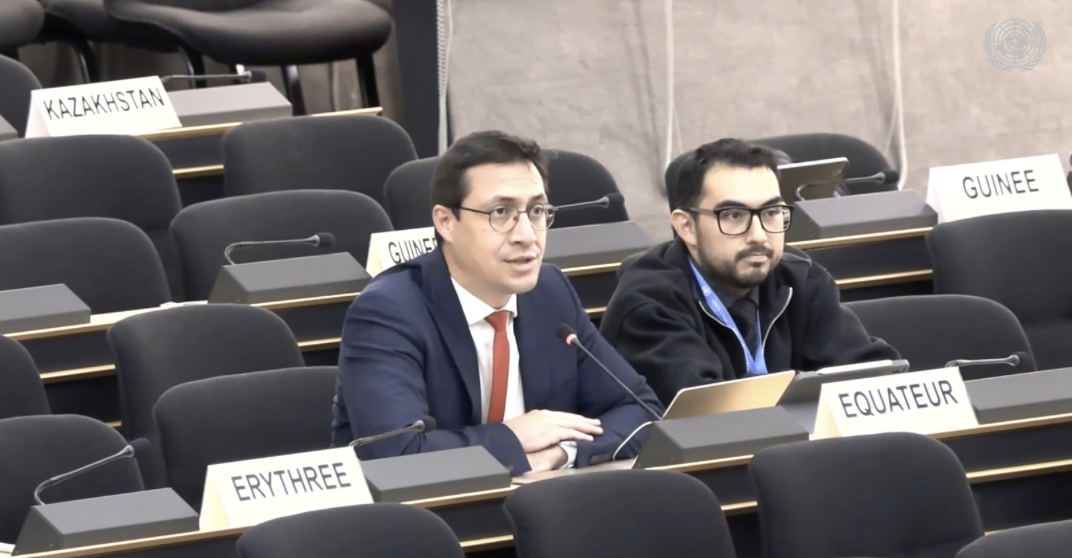
Ecuador reaffirmed its commitment to eliminating child labour, in alignment with international human rights norms. The delegation noted significant national progress in translating global commitments into concrete domestic policies, particularly through key institutions such as the Ministry of Labour and the Ministry of Economic and Social Inclusion. Ecuador has implemented targeted programmes intending to withdraw children from the worst forms of labour and reintegrate them into educational systems to ensure long-term protection and development. In light of the upcoming 11th session of the Intergovernmental Working Group on a legally binding instrument, Ecuador asked the Special Rapporteur what preventive measures should be prioritised to address child labour structurally and sustainably. The delegation further emphasised the need to ensure that child labour prevention strategies are integrated into broader social protection and education systems to break cycles of vulnerability.
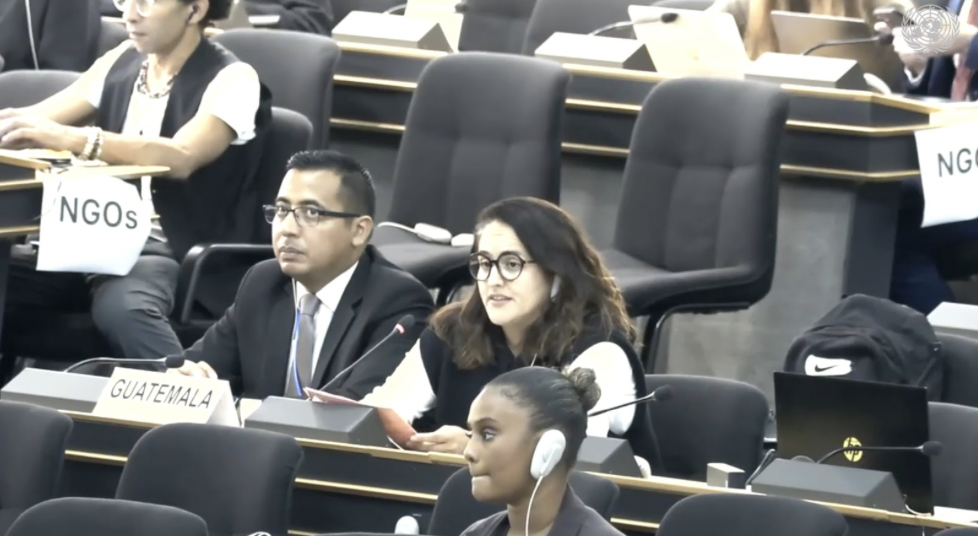
Guatemala expressed appreciation for the report of the Special Rapporteur and reaffirmed its national commitment to child protection. The delegation acknowledged the existing challenges and identified several measures being implemented under the leadership of the Ministry of Labour and Social Welfare, such as targeted inspections in high-risk areas, awareness-raising campaigns, and enforcement of child protection laws. The Vice Presidency, through a dedicated cabinet, has launched a national inter-institutional plan, opened specialised care units, and focused on reintegration and educational continuity. Guatemala extended an open invitation to the Special Rapporteur to conduct a country visit and confirmed its willingness to continue cooperating with international mechanisms to ensure a child-centred approach to policy-making. The delegate stressed that ongoing efforts are aimed not only at withdrawing children from exploitative labour, but also at addressing the underlying socio-economic causes that lead families to rely on child labour.
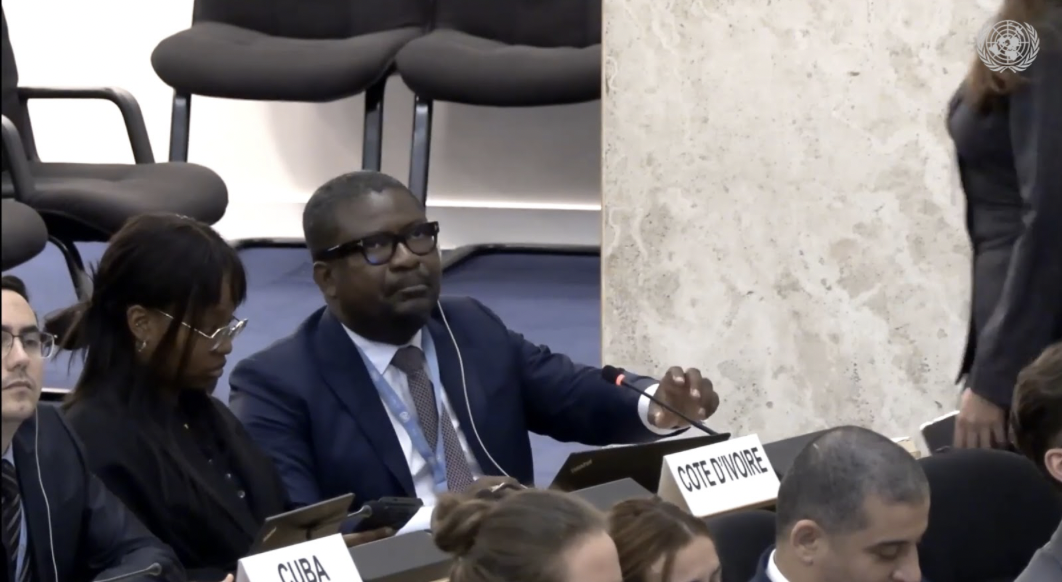
Ivory Coast thanked the Special Rapporteur for his in-depth report and expressed concern regarding the persistence of the worst forms of child labour, which remain a grave violation of children’s rights, particularly the right to education and protection. Since 2011, the country has strengthened its legal and institutional frameworks, notably through the creation of the National Monitoring Committee against trafficking and exploitation, led by the First Lady. This body coordinates national efforts and monitors implementation. The country recently launched its fourth National Action Plan, which builds upon previous efforts that enabled the withdrawal of over 30,000 children from exploitative labour and the prosecution of more than 230 offenders. The delegation of Ivory Coast emphasised the need for stronger international cooperation and asked the Special Rapporteur what concrete measures could be recommended to enhance international judicial cooperation in the fight against forced child labour. The delegation also highlighted the importance of regional partnerships in addressing transboundary child exploitation, which often requires coordinated legal and operational responses.
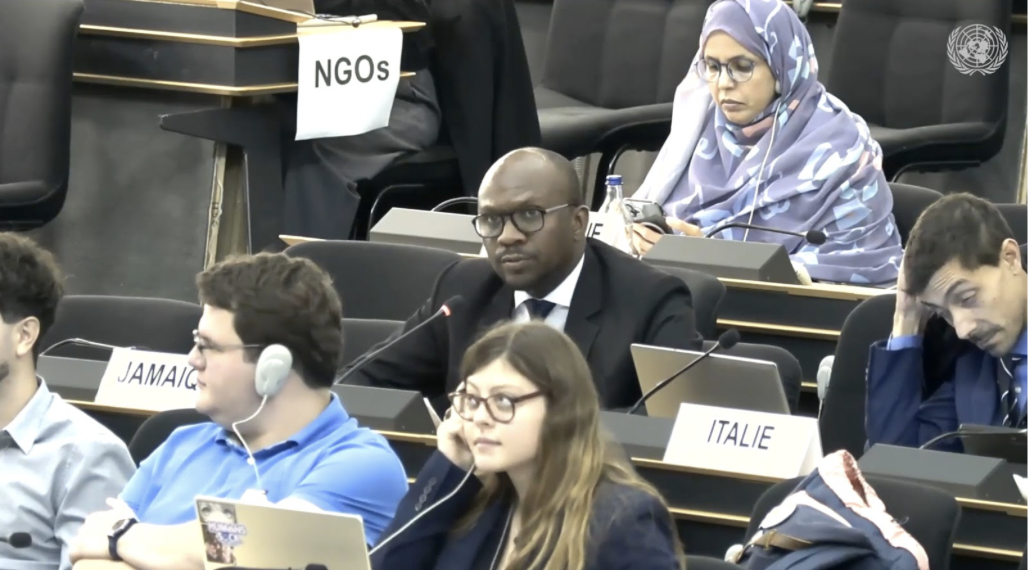
Jamaica reiterated its full commitment to eliminating child labour and highlighted recent steps taken, including the ratification of international conventions and the adoption of a national action plan in 2024, supported by a newly established national coordination team. The delegate drew attention to the persistence of dangerous forms of child labour and called for a multi-stakeholder approach, particularly involving the private sector. Jamaica stressed the need for corporate due diligence and the importance of addressing root causes, such as poverty and limited access to education. Programs promoting school feeding, health, and family assistance have been introduced. The delegation inquired about effective measures that States can adopt to tackle child labour in the face of emerging global challenges, such as climate change. It also underscored the importance of improving data collection and monitoring systems to better track progress and guide evidence-based interventions.
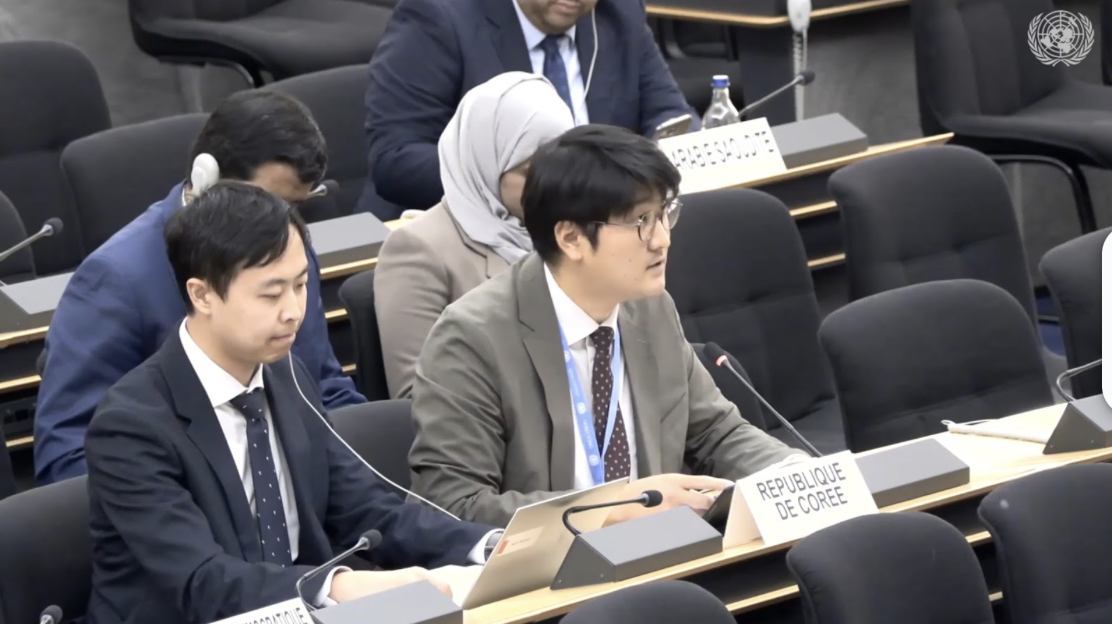
The Republic of Korea welcomed the timely and comprehensive nature of the Special Rapporteur’s report. The delegation expressed deep concern that approximately 54 million children are still engaged in child labour, and that the global goal to eradicate such practices by 2025 appears far from reach. Korea underscored the obligation of States to protect children from any form of labour that harms their physical, mental, or spiritual development, and to strictly prohibit hazardous work, especially for children under 15. The delegation also pointed to the increasing risks posed by digital technologies, which can facilitate new forms of exploitation. Korea supports the initiatives led by the Special Rapporteur, including the UN-led resilience strategy, and highlighted the importance of providing tools to companies, particularly SMEs, to help identify and prevent child labour in global supply chains. In addition, the delegation called for enhanced public-private partnerships to support innovation in child labour prevention, including the use of technology for real-time reporting and verification in at-risk sectors.
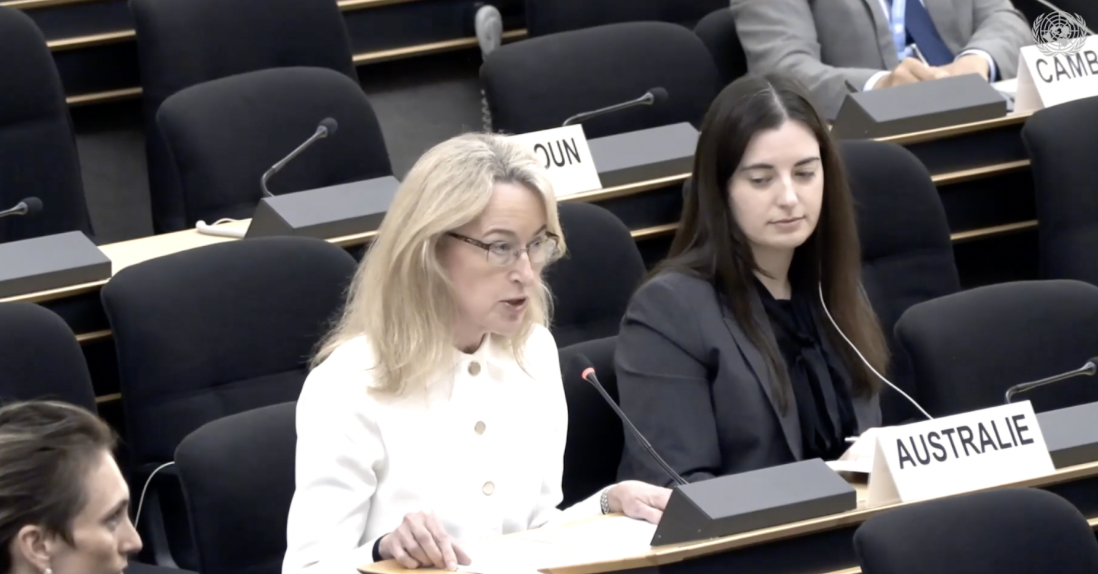
Australia expressed appreciation for the Special Rapporteur’s visit to the country in November 2024 and reaffirmed its strong commitment to countering modern slavery both at home and abroad. The delegation welcomed recognition of Australia’s legal and institutional frameworks, survivor‑centred engagement, and recent reforms to address migrant worker exploitation. It highlighted the appointment of the first Federal Anti‑Slavery Commissioner, public consultation to strengthen the Modern Slavery Act 2018 and the launch of the “Modern Slavery in Australia” website available in 249 languages. Additional measures included a new forced‑marriage support programme, practice guidelines for organisations working with people at risk of slavery, the establishment of a survivor advisory council and an audit of government procurement procedures to better trace supply‑chain risks. Australia further outlined protections for migrant workers, including safeguards against visa cancellation when reporting exploitation, extended stays for those pursuing justice and new criminal offences targeting wage theft. The delegation also referred to enhanced oversight of the Pacific Australia Labour Mobility scheme and its international engagement, including regional cooperation against online scam centres and ASEAN guidelines on the non‑punishment principle and prevention of child and forced marriage. Australia concluded by reaffirming its determination to implement the Special Rapporteur’s recommendations and advance its National Action Plan to Combat Modern Slavery.
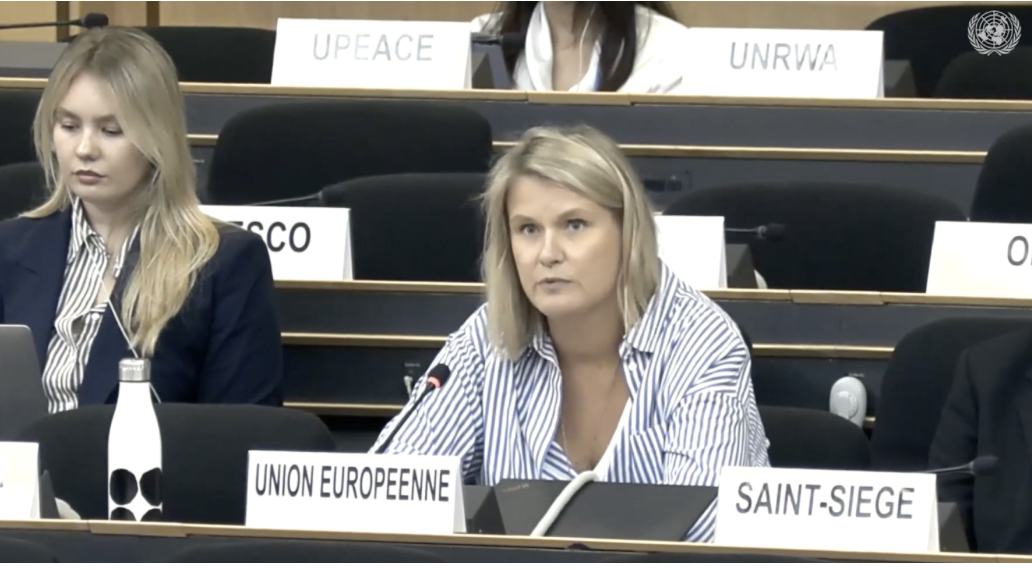
The European Union underlined its firm commitment to eliminating child labour and called for the universal ratification and implementation of relevant ILO conventions. The delegation highlighted the EU’s strategy on the rights of the child, which prioritises access to free quality education, social and legal protection and stronger labour inspections in partner countries, as well as judicial measures to prosecute perpetrators. It noted that 10% of the EU’s humanitarian aid budget is dedicated to education in emergencies, helping to reduce child labour. The EU also pointed to the adoption of its forced labour regulation, banning products made with forced and child labour, and the Corporate Sustainability Due Diligence Directive, which obliges large companies to address human rights risks in their supply chains. In addition, the Sustainable Cocoa Initiative was cited as an example of promoting sustainable practices and preventing child labour in cocoa production. The delegation inquired about recommendations on how to best include the perspectives of children and families in the design and implementation of anti-exploitation measures.
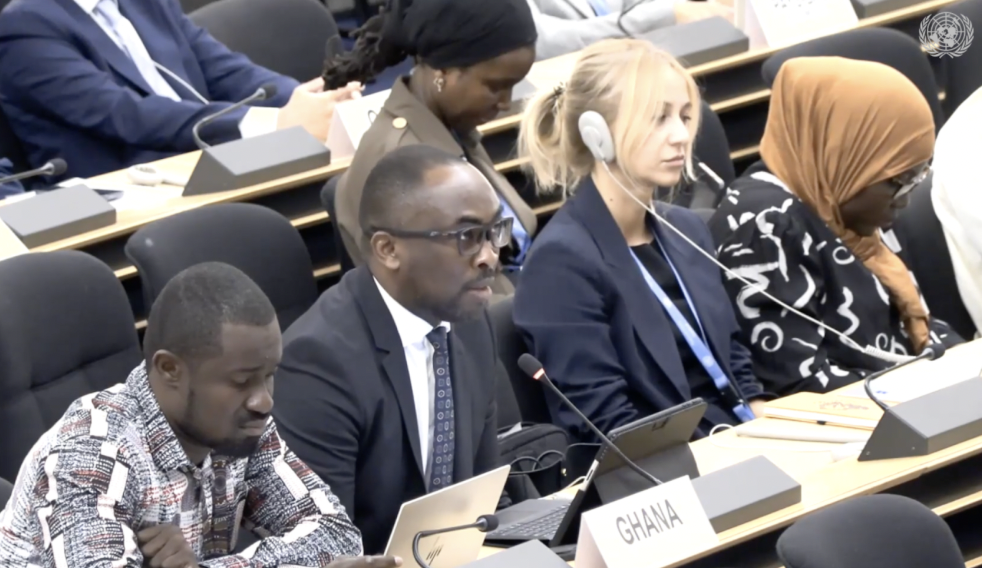
Ghana, speaking on behalf of the African Group, expressed deep concern over the persistence of the worst forms of child labour, noting their harmful impact on multiple SDGs, particularly education, health, poverty eradication, and the reduction of inequalities. The Group endorsed the Special Rapporteur’s conclusions and recommendations, calling for stronger national mechanisms to detect and combat child slavery, including in the workplace and online. It reaffirmed commitment to the African Union’s ten-year plan to eradicate child labour, forced labour, human trafficking, and modern slavery under Agenda 2063 and urged international partners to increase their support to African countries in achieving these objectives.
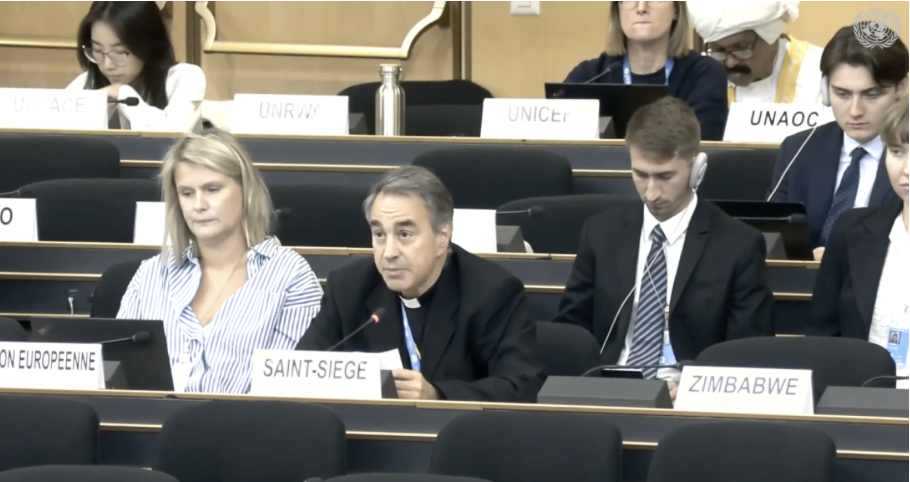
The Holy See described child labour as a grave violation of human dignity and a betrayal of children’s innocence, calling it one of the most heinous assaults on human rights. It stressed that the weakening of families through poverty, division and despair often leaves children most vulnerable to exploitation, sometimes even handed over by their parents to exploiters. The delegation voiced deep concern over the continued recruitment and indiscriminate use of children in armed conflicts, as well as the misuse of digital technologies to radicalise and incite their participation. These practices were denounced as scandalous forms of child labour. The Holy See urged States to work towards universal ratification and effective implementation of the Optional Protocol to the Convention on the Rights of the Child on the involvement of children in armed conflicts.
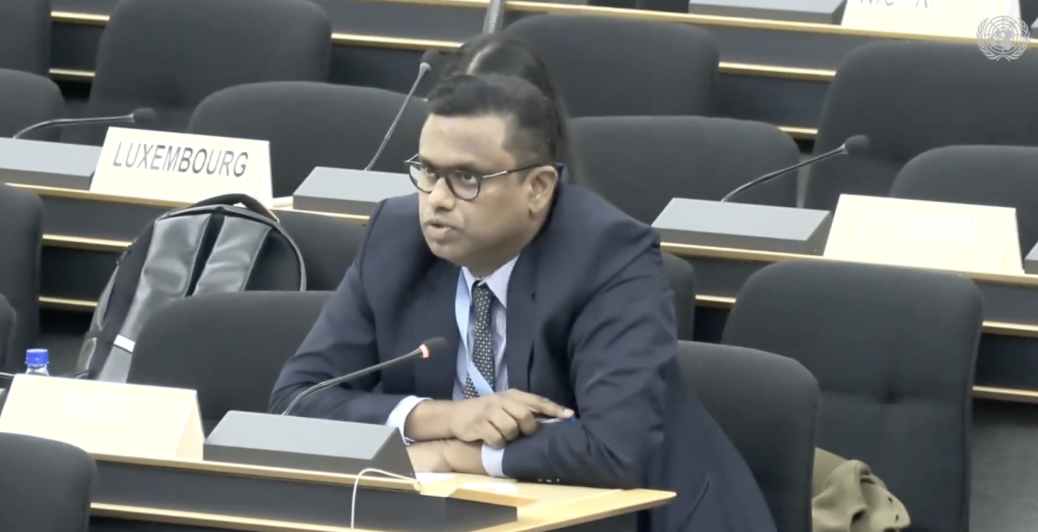
India outlined its comprehensive framework to eliminate child labour and protect children’s rights. The delegation highlighted the Child and Adolescent Labour Prohibition and Regulation Act, which bans employment of children under 14 in all occupations and prohibits hazardous work for adolescents aged 14 to 18, with strict penalties for violations. Implementation is supported by a model state action plan guiding states in eradication efforts. For rehabilitation, the National Child Labour Project scheme rescues children, provides bridge education through special training centres and reintegrates them into schools. India also underscored the Right of Children to Free and Compulsory Education Act, guaranteeing free elementary education for all children aged 6 to 14, and the 2020 National Education Policy, which stresses early childhood care and education. In addition, the Juvenile Justice Act of 2015 was noted for establishing a child-friendly framework for care, protection, and rehabilitation. The delegation affirmed India’s commitment to a comprehensive approach combining legislative, educational, and socio-economic measures to end child labour.
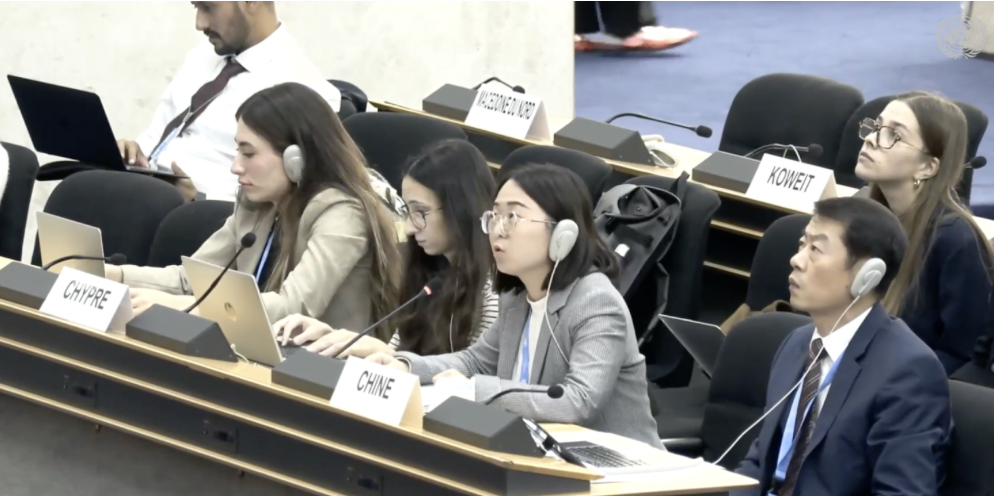
China emphasised that children are the future and highlighted the government’s principle of placing children first. The delegation noted ongoing efforts to improve institutional mechanisms supporting children’s holistic development, strengthen the environment for their growth, and safeguard their rights to subsistence and development. It referred to the strict enforcement of laws against child trafficking and the implementation of the National Action Plan against Trafficking in Persons 2021 - 2023. While recognising that comprehensive protection of children’s rights remains a long-term challenge, China affirmed its active engagement in international cooperation to advance global child protection. The delegation called on all countries to ratify the Convention on the Rights of the Child without delay and urged effective action to tackle intergenerational poverty, forced child labour, gun violence, child abuse, racial discrimination, trafficking, and sexual violence against children.
Concluding remarks
In his closing remarks, Pr. Obokata, expressed gratitude to all delegations for their constructive contributions and highlighted the importance of country visits as a means to showcase and strengthen good practices. He urged States, particularly in regions such as Asia and the Middle East, to extend invitations for official visits. Addressing issues raised during the dialogue, he emphasised the critical role of businesses in eradicating child labour throughout entire value chains, underlining that both large companies and SMEs must implement human rights due diligence, albeit with flexibility and context-sensitive approaches. The Special Rapporteur welcomed ongoing discussions on the Treaty on Business and Human Rights as a step towards stronger accountability and victim protection.
Pr.. Obokata encouraged the inclusion of labour rights clauses in trade and investment agreements and underscored the need to amplify the voices of children and families through engagement with independent commissioners, educational institutions, civil society, and workers’ organisations. He pointed to international treaties, such as the UN Convention against Transnational Organised Crime and the new Convention on Cybercrime, as key frameworks for effective cross-border cooperation. He also stressed the urgency of addressing child marriage, recognising its link to other exploitative practices, and called for legislation prohibiting marriage under 18 in line with international standards.
Concluding his final interactive dialogue as Special Rapporteur, Pr. Obokata thanked the Council, States, civil society and workers’ organisations for their support throughout his mandate. He reaffirmed his intention to continue advancing the fight against contemporary forms of slavery beyond his term, pledging to remain engaged with stakeholders in different capacities.
Position of Geneva International Centre for Justice
Geneva International Centre for Justice (GICJ) remains gravely concerned about the persistence of the worst forms of child labour, which constitute flagrant violations of human rights and dignity. Such practices strip children of their rights to education, health, and development, and obstruct the achievement of SDG 8.7 to abolish forced labour in all its forms.
We emphasise that accountability is crucial, whether in business, informal economies, or armed conflicts; those responsible for exploiting children must face justice. Effective accountability is one of the strongest deterrents to child labour. GICJ also highlights the growing vulnerability of migrants to exploitation, noting particular concerns about deported migrants enslaved by armed groups in South America.
We strongly support the Special Rapporteur’s call for restorative justice for children coerced into armed conflict. At the same time, genuine justice requires that those who recruit and exploit child soldiers be prosecuted, in order to reinforce international norms that recognise children as rights-holders, not economic tools.
GICJ calls on all States to act decisively to end impunity, tackle root causes such as poverty and inequality, and break the intergenerational cycles of exploitation. Finally, we reiterate the urgent need to fully implement the Durban Declaration and Programme of Action to eradicate racism and all contemporary forms of slavery.




